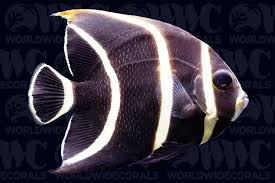The Significance of Dragons in Chinese Mythology and Tales of the Gods
Dragons have long been an integral symbol in Chinese culture, revered for their mythical qualities and divine associations. Unlike the fearsome beasts of Western mythology, Chinese dragons are depicted as benevolent and powerful creatures that represent wisdom, strength, and prosperity. Their significance permeates every facet of Chinese history, folklore, and spirituality, often appearing in tales involving gods and celestial beings. This article delves into the symbolism of dragons and their roles in the myths surrounding the gods of ancient China.
The Dragon as a Symbol in Chinese Culture
In Chinese mythology, dragons are more than mythical creatures—they embody cosmic energy and balance. Traditionally, they are considered the rulers of water, controlling rainfall, rivers, lakes, and seas. This connection to water made them vital symbols for agricultural societies, where their favor ensured abundant harvests and prosperity. Dragons also symbolize power and authority, often associated with emperors who were considered the sons of heaven and the ultimate earthly representatives of the divine.
Chinese dragons are not merely animals but composite beings featuring elements of other creatures: the horns of a stag, the scales of a carp, the claws of an eagle, and the body of a serpent. This amalgamation represents their omnipotence and omnipresence. Their ability to traverse the heavens and seas underscores their role as intermediaries between gods and humans.
Dragons in the Creation Myths
One of the earliest and most significant myths involving dragons is that of the cosmic dragon, Pangu. While Pangu himself is not a dragon, his creation story sets the foundation for the universe, in which dragons play a key role in maintaining order. The dragon embodies the forces of yang, representing light, masculinity, and heaven, complementing the phoenix, which represents yin. Together, they symbolize the harmony of the universe.
Another creation myth involves Nuwa, the goddess credited with creating humanity. In many depictions, Nuwa has a serpent-like lower body resembling a dragon. Her association with the dragon emphasizes her divine power over creation and fertility. Dragons here symbolize her ability to bring balance and nurture life, connecting the mortal and celestial realms.
The Dragon Kings and Their Celestial Authority
The Dragon Kings (Longwang) are central figures in Chinese mythology, embodying the divine connection between dragons and water. These four kings, each governing one of the four seas (east, west, north, and south), are not only rulers of aquatic realms but also loyal servants to the Jade Emperor, the supreme god of heaven.
The Eastern Dragon King, Ao Guang, often features in stories involving mortals and gods. One tale recounts how Ao Guang’s arrogance led him to neglect his duties, causing floods and droughts. Nezha, the child deity and warrior, confronts Ao Guang, defeating him and restoring balance. This myth underscores the duality of dragons as both protectors and potential threats, emphasizing the importance of their proper stewardship.
Dragons and the Jade Emperor
The Jade Emperor, as the ruler of heaven, frequently interacts with dragons in mythology. Dragons serve as his celestial emissaries, carrying out his will in the mortal and divine realms. For instance, in the myth of the Great Flood, the dragons were instrumental in quelling the waters under the command of divine figures like Gun and Yu.
The Jade Emperor’s reliance on dragons highlights their role as symbols of divine authority and cosmic balance. It also reflects the ancient belief that human rulers, like the Jade Emperor, needed the dragons’ favor to maintain their mandate of heaven.
Dragons in the Legend of the Yellow Emperor
The Yellow Emperor, or Huangdi, is one of the most revered figures in Chinese mythology, often regarded as the progenitor of Chinese civilization. In many accounts, Huangdi is closely associated with dragons, both as a symbol of his divine right to rule and as his celestial vehicle. Legends tell of Huangdi ascending to heaven on the back of a dragon at the end of his earthly reign, symbolizing his ultimate transcendence and unity with the divine.
This association between dragons and the Yellow Emperor cemented their status as symbols of imperial power and legitimacy throughout Chinese history. Emperors often used the dragon motif in their regalia, reinforcing their connection to Huangdi and the heavens.
Dragons and the Myth of the Eight Immortals
The Eight Immortals (Ba Xian) are a group of legendary figures in Chinese folklore, each with unique powers and attributes. Dragons frequently appear in their stories, either as companions or adversaries. In one tale, the immortals encounter a dragon blocking their path across a river. Rather than slaying it, they outwit the creature, demonstrating their ingenuity and divine favor.
These interactions between the immortals and dragons highlight the multifaceted nature of dragons in Chinese mythology. They are not merely forces to be overcome but are also respected as equals or collaborators in maintaining cosmic harmony.
The Role of Dragons in the Lunar Calendar
In the Chinese zodiac, the dragon is the only mythical creature among the 12 animals, symbolizing its unique status in Chinese culture. People born in the Year of the Dragon are believed to inherit the creature’s attributes: ambition, courage, and vitality. This reverence for dragons in the zodiac underscores their deep cultural significance, even beyond their mythological origins.
The inclusion of the dragon in the zodiac reflects its integration into daily life and personal identity, linking celestial symbolism with individual destiny.
Modern Reflections of Dragons in Chinese Culture
Though rooted in ancient mythology, the dragon remains a vibrant symbol in modern Chinese culture. Dragon dances and boat races are integral to festivals like the Lunar New Year and the Dragon Boat Festival. These traditions celebrate the dragon’s legacy as a bringer of good fortune and protector of communities.
In modern China, the dragon is also a national emblem, representing the country’s cultural heritage and aspirations. It bridges the past and present, serving as a timeless symbol of strength and unity.
Conclusion
Dragons in Chinese mythology are more than mythical creatures; they are symbols of cosmic balance, divine authority, and cultural identity. Through their roles in the tales of gods, dragons illustrate the profound connection between humanity and the divine. From the Dragon Kings and the Jade Emperor to the myths of creation and immortality, dragons have left an indelible mark on Chinese folklore, embodying the ideals of harmony, wisdom, and power.
Their enduring significance reflects their ability to adapt and resonate with changing times, ensuring that their legacy continues to inspire and unite people across generations. The dragon, as a creature of myth and symbol, stands as a testament to the rich tapestry of Chinese cultural and spiritual heritage.



